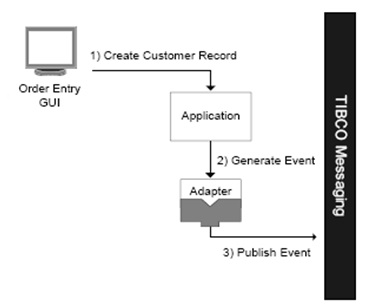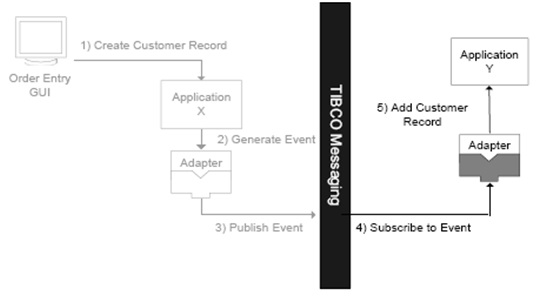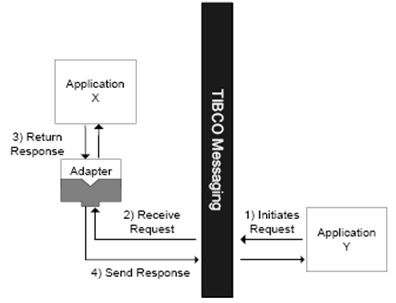Adapter Services :
An adapter is configured to provide one or more of the following services:
• Publication Service
• Subscription Service
• Request-Response Service
• Request-Response Invocation Service
Publication Service
An adapter publication service recognizes when business events happen in a vendor application, and asynchronously sends out the event data in realtime to interested systems in the TIBCO environment.
For example, an adapter can publish an event each time a new customer account is added to an application. Other applications that receive the event can then update their records just as the original Application did.
Subscription Service
The adapter service listens to external business events, which trigger the appropriate action and asynchronously performs an action—such as updating business objects or invoking native APIs—on a vendor application.
For example, an adapter subscription service can listen for customer record creation events (happening in an application and published to the TIBCO infrastructure) and update another application.
Request-Response Service
An adapter can be used to synchronously retrieve data from or execute transactions within a vendor application. After the action is performed in the vendor application, the adapter service sends a response back to the requester with either the results of the action or a confirmation that the action occurred.
For example, an adapter receives a request message from the TIBCO infrastructure and sends it to an application. The adapter gets a response from the application and returns it.
Request-Response Invocation Service
An adapter request-response invocation service is similar to the request-response service, except that the roles are reversed. The vendor application is now the requester or initiator of the service, instead of the provider of the service. The adapter service acts as a proxy, giving the vendor application the ability to synchronously invoke functionality on an external system.
The next diagram shows the adapter sending a request message from application Y to application X. After it processes the message, it is returned to the adapter, which sends the response back to application Y.
Please comment/like if you find this post useful 🙂




